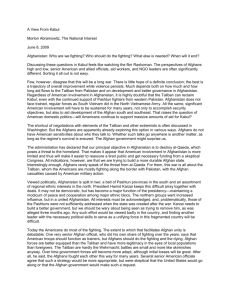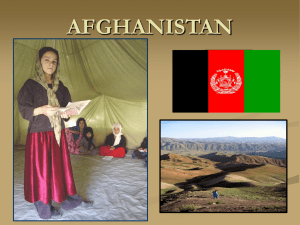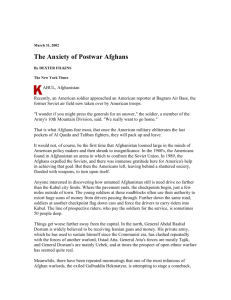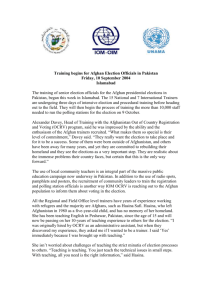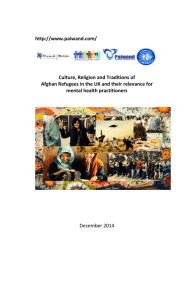Migrations, Remittances, and Resistances among Afghans in
advertisement
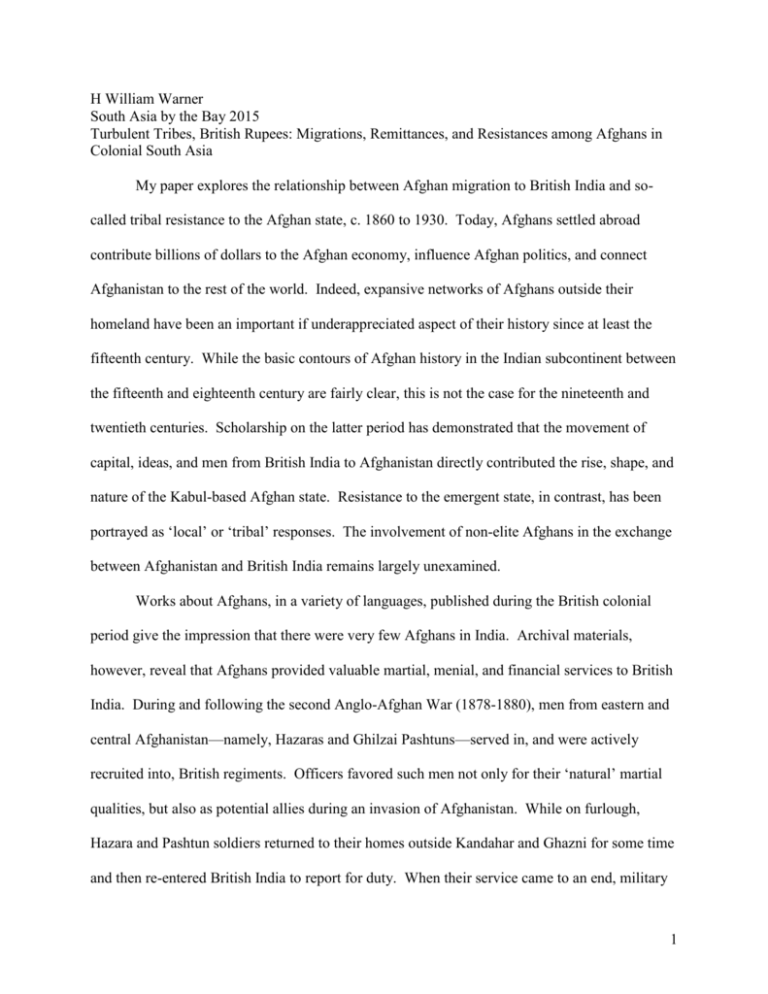
H William Warner South Asia by the Bay 2015 Turbulent Tribes, British Rupees: Migrations, Remittances, and Resistances among Afghans in Colonial South Asia My paper explores the relationship between Afghan migration to British India and socalled tribal resistance to the Afghan state, c. 1860 to 1930. Today, Afghans settled abroad contribute billions of dollars to the Afghan economy, influence Afghan politics, and connect Afghanistan to the rest of the world. Indeed, expansive networks of Afghans outside their homeland have been an important if underappreciated aspect of their history since at least the fifteenth century. While the basic contours of Afghan history in the Indian subcontinent between the fifteenth and eighteenth century are fairly clear, this is not the case for the nineteenth and twentieth centuries. Scholarship on the latter period has demonstrated that the movement of capital, ideas, and men from British India to Afghanistan directly contributed the rise, shape, and nature of the Kabul-based Afghan state. Resistance to the emergent state, in contrast, has been portrayed as ‘local’ or ‘tribal’ responses. The involvement of non-elite Afghans in the exchange between Afghanistan and British India remains largely unexamined. Works about Afghans, in a variety of languages, published during the British colonial period give the impression that there were very few Afghans in India. Archival materials, however, reveal that Afghans provided valuable martial, menial, and financial services to British India. During and following the second Anglo-Afghan War (1878-1880), men from eastern and central Afghanistan—namely, Hazaras and Ghilzai Pashtuns—served in, and were actively recruited into, British regiments. Officers favored such men not only for their ‘natural’ martial qualities, but also as potential allies during an invasion of Afghanistan. While on furlough, Hazara and Pashtun soldiers returned to their homes outside Kandahar and Ghazni for some time and then re-entered British India to report for duty. When their service came to an end, military 1 officials decided to commute pensions so that retired soldiers could remain in Afghanistan permanently. Trans-border martial service and the circulation it generated led to a great deal of diplomatic tension between the Indian and Afghan governments, but continued in a modified form until the 1930s. Afghans also played a critical role in manual labor market of the Indus River valley. The expansion of irrigation canals in the Punjab, North-West Frontier Province, and Sind, the growth of Bombay’s international commerce, and the construction of new roads and railways depended on the seasonal arrival of thousands of Afghan laborers. Hazaras and Ghilzai Pashtuns traveled to different parts of British India every October to work labor-intensive jobs for cash. In addition to undertaking the least desirable tasks, they often lived in improvised housing or on the streets in order to save money. The cash fortunes they brought back when they left British India in May sustained their communities in the face of steep economic decline. For this reason, many continued to travel east for temporary employment despite harassment not only from communities in British India, but also from state officials in Afghanistan. Finally, Afghans also serviced the cash demands of agricultural and industrial laborers throughout British India. Originally from the pastoral nomadic clans of the Ghilzai tribal confederacy, Afghan moneylenders appeared all over the Indian subcontinent, but were most notorious in Bengal. They offered short-term, collateral-free cash loans to individuals unable to access Marwaris, Chettiers, and other banking communities and institutions. Many Afghan moneylenders became quite wealthy and politically powerful. Some used their profits to purchase land in Afghanistan. Nineteenth- and twentieth-century migrations to the subcontinent were distinct from the earlier ones in three ways. First, migrations to the subcontinent became increasingly circular as 2 employment opportunities supported settlement at home rather than abroad. Historically, primarily pastoral nomads and itinerant merchants undertook circular migration. Other communities, especially military men, typically migrated in a uni-directional fashion. In the modern period, most departed for other parts of the subcontinent with the expectation that they would eventually return. Second, Afghan engagement with the subcontinent increasingly took place on a seasonal basis and in cash. Taking advantage of the difference between British India’s and Afghanistan’s economies, cash remittances allowed men from the rural hinterlands to reproduce or advance themselves socially. Even though Afghans had been a rather mundane and ubiquitious prescence throughout South Asia, in the last two centuries they increasingly came to be seen as foreign predators and interlopers. Third, where once Afghans on the move built states, mobile Afghans in the modern period often resisted the state. In Afghanistan, individuals who traveled to India hailed from the most marginalized tribes and communities: the Ghilzai Pashtuns and Hazaras. Their conflicts with the state coincided with, and were perhaps fueled by, their migrations abroad. Migration therefore not only acted as a form of resistance, but also supported other forms of resistance, such as rebellion. My paper ultimately demonstrates that Afghans occupied and relied on occupational roles less visible in but still important to British India. Through circular migration and cash remittance, Afghans could reproduce themselves socially and, if necessary, resist the state militarily. Thus, attempts to unmake modern Afghanistan likely stemmed not from inwardlooking tribalism, but rather from livelihoods very much connected with the modern world. 3


